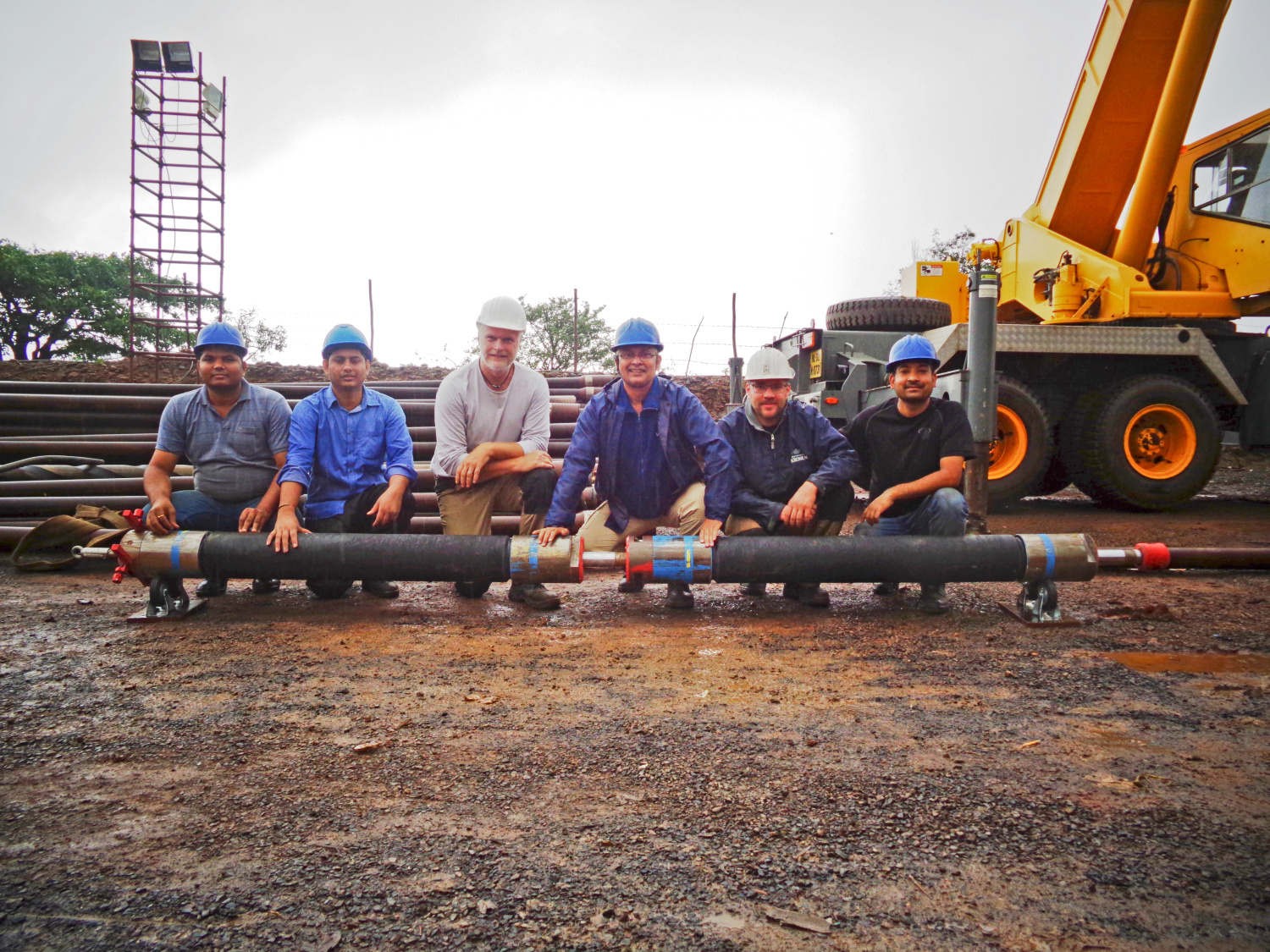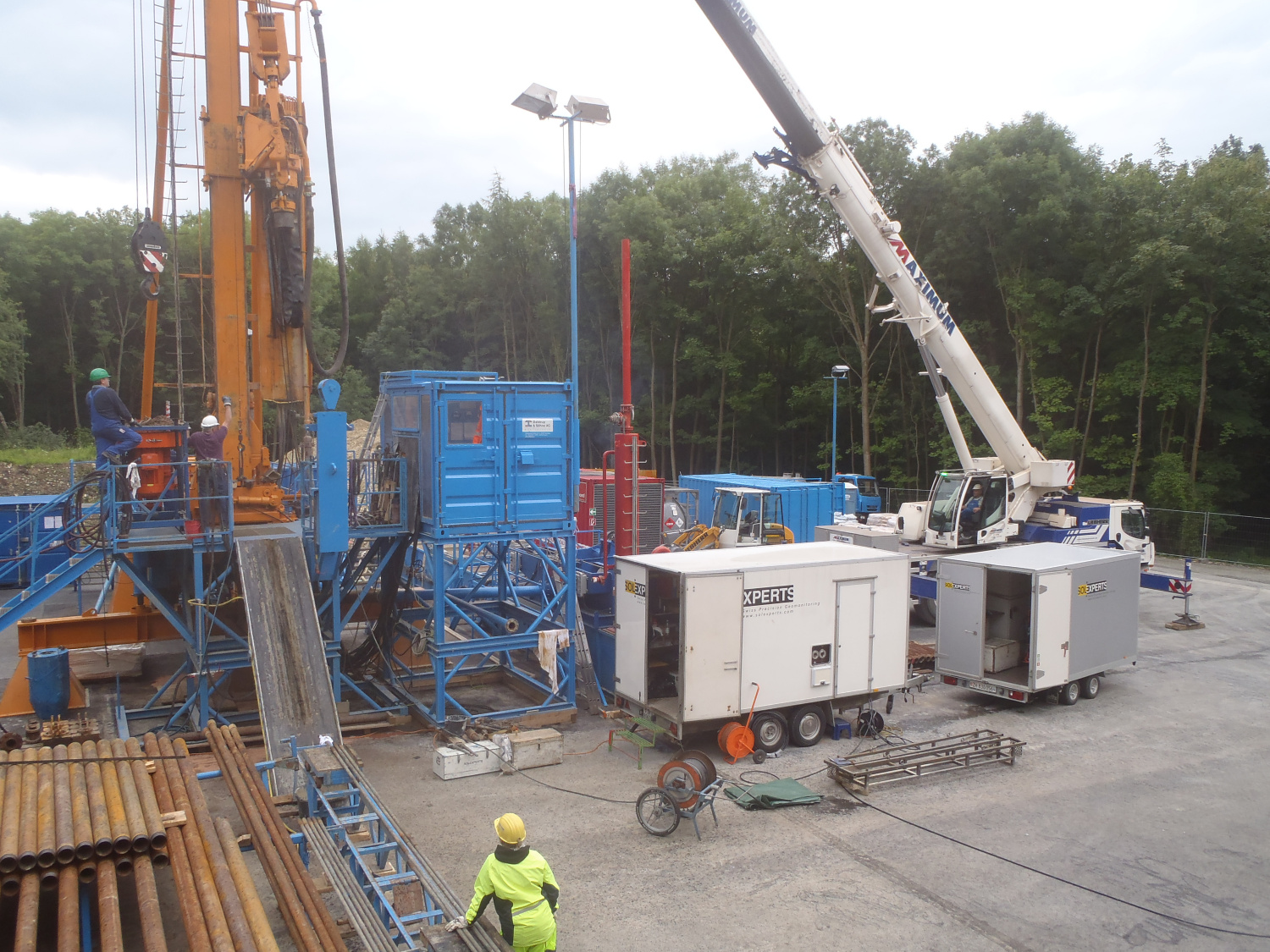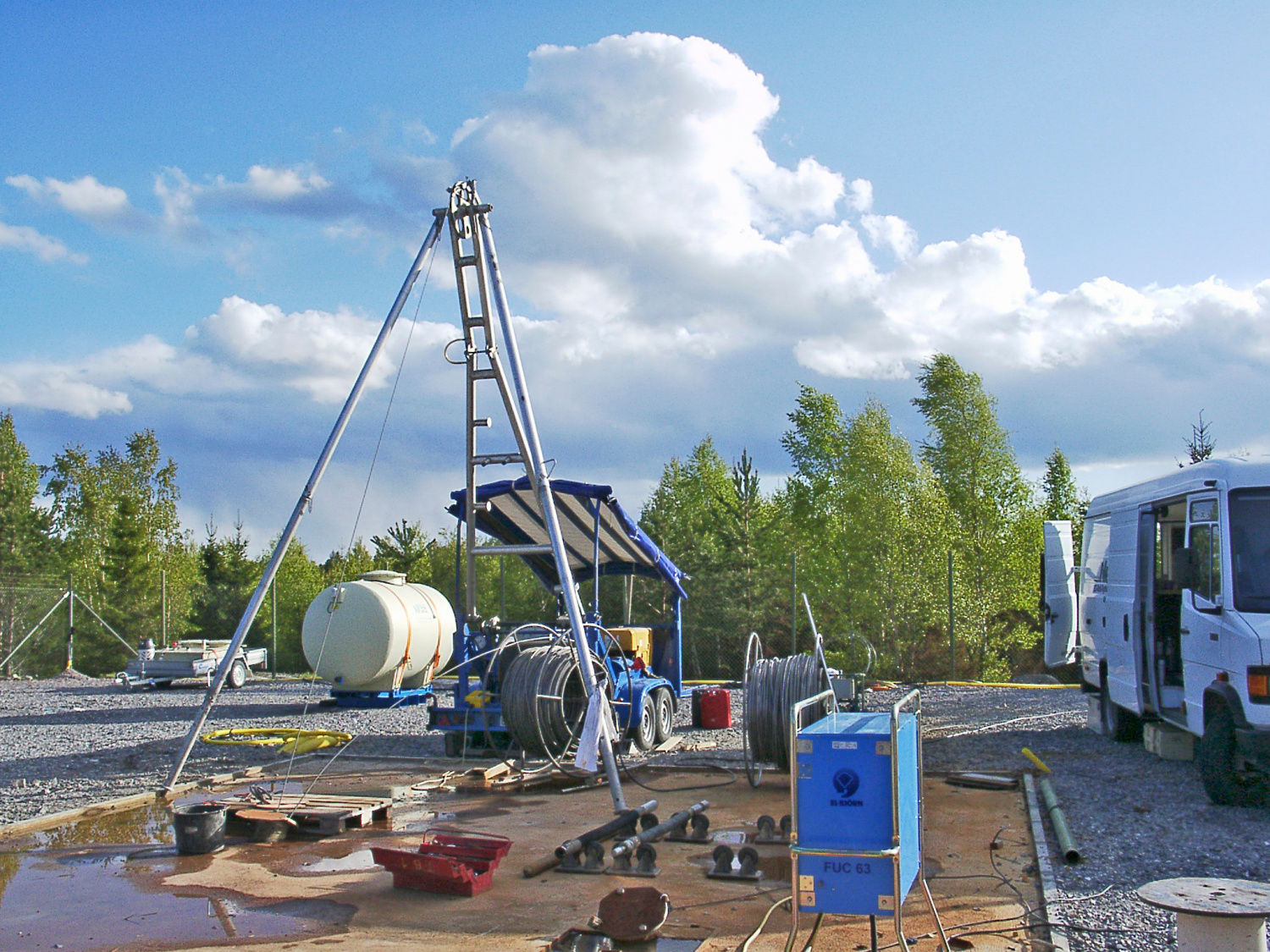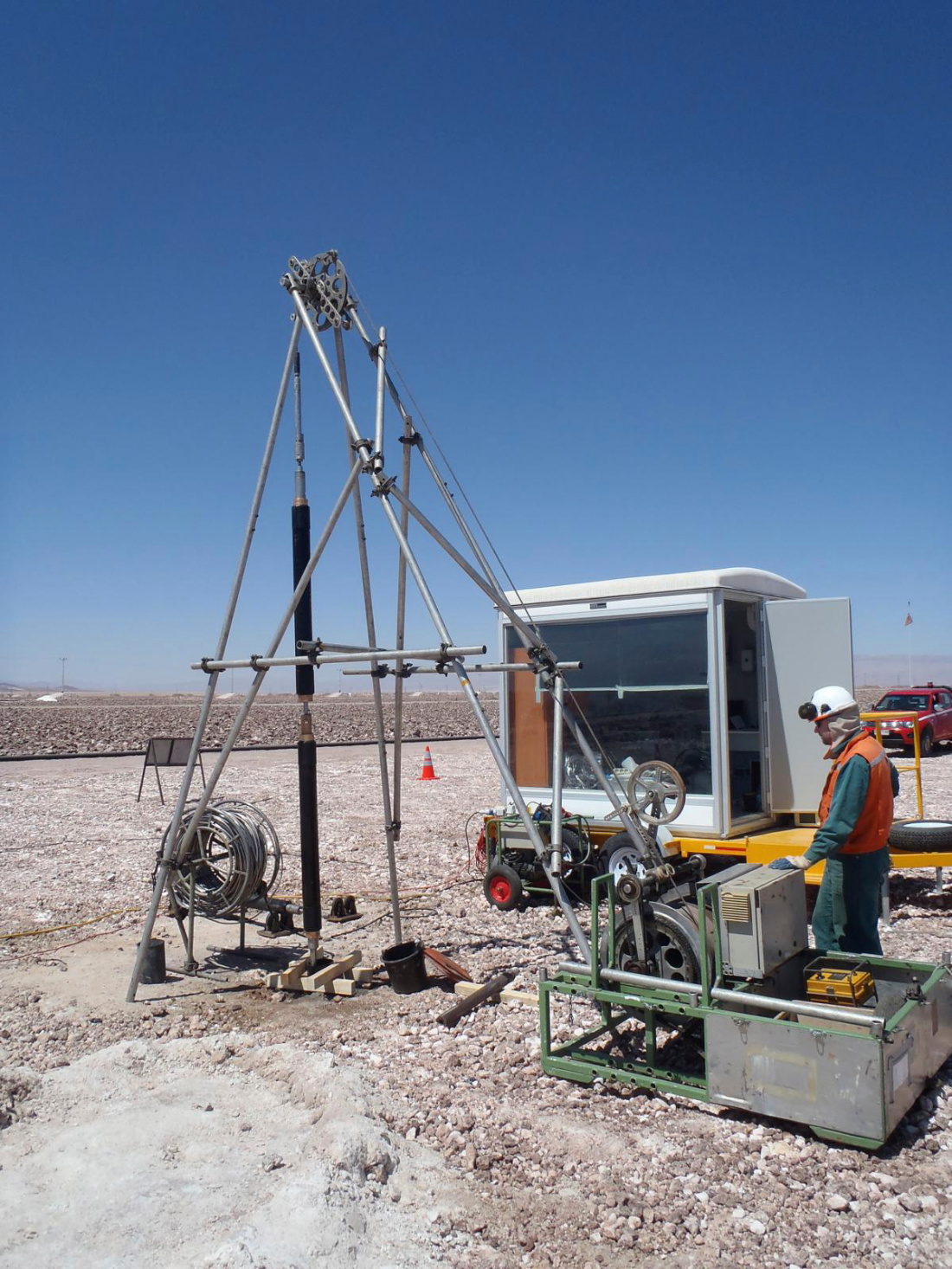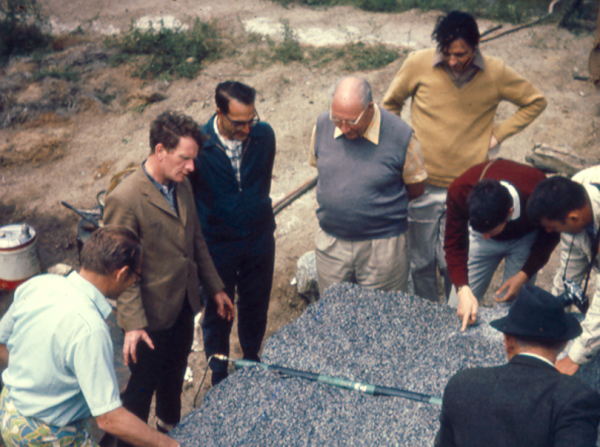Hydraulic fracturing method
Knowledge of the in-situ primary stresses in the subsurface is an essential prerequisite for the design of underground structures with regard to their dimensioning and long-term stability. The only method for direct measurement of in-situ stresses is the hydraulic fracturing (HF) or hydraulic testing of pre-existing fractures (HTPF) method. For both methods, a test section is isolated in a borehole with hydraulic packers and then the fluid pressure is increased in the measurement interval until either
- in the case of an unfractured, intact rock, a new fracture is induced in the borehole wall and subsequently widened (HF) or
- in the case of fractured rock, existing cracks/fissures are hydraulically opened (HTPF).
Together with the spatial orientation of the cracks determined from impression packer tests or imaging bore logs, the measured pressure values necessary to create, widen and keep open the cracks are used to estimate the size and direction of the in-situ stress field.
MeSy® has more than 30 years of know-how in the field of hydraulic fracturing for in-situ stress measurement in boreholes up to 5 km depth and in every common borehole diameter. In addition to conventional testing on drill pipe or tubing string, the tests are mainly carried out with the wireline equipment developed by us. Therefore, the test performance is independent of the drilling rig and very cost-efficient.


HF- Equipment demonstration 1969, granite quarry in N-Minnesota, 2nd from left C. Fairhurst (founder of Itasca), photographed by Hydrofrac test pioneer Professor Rummel (founder of MeSy).

